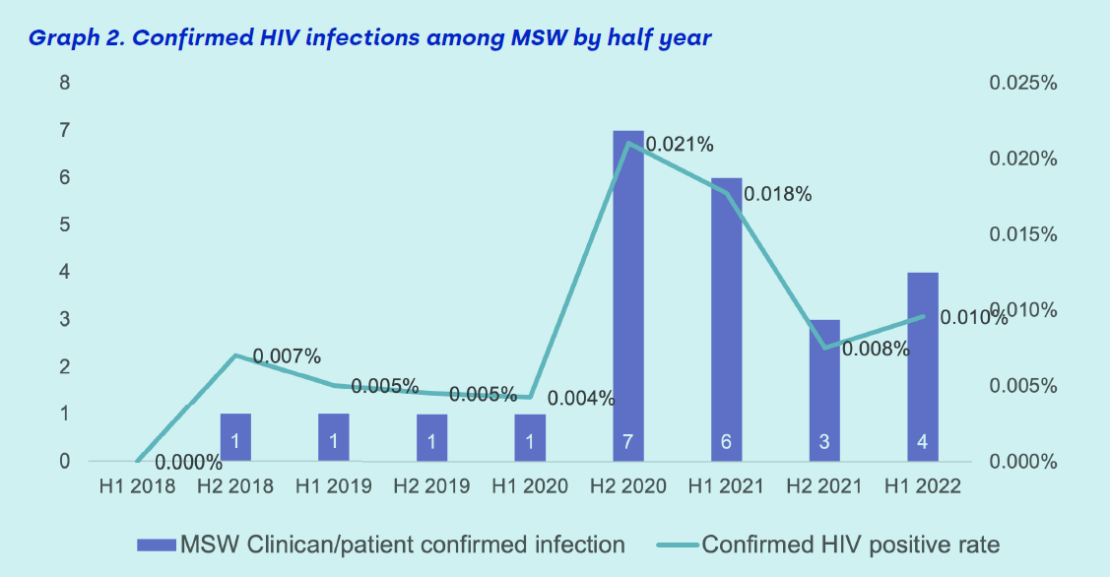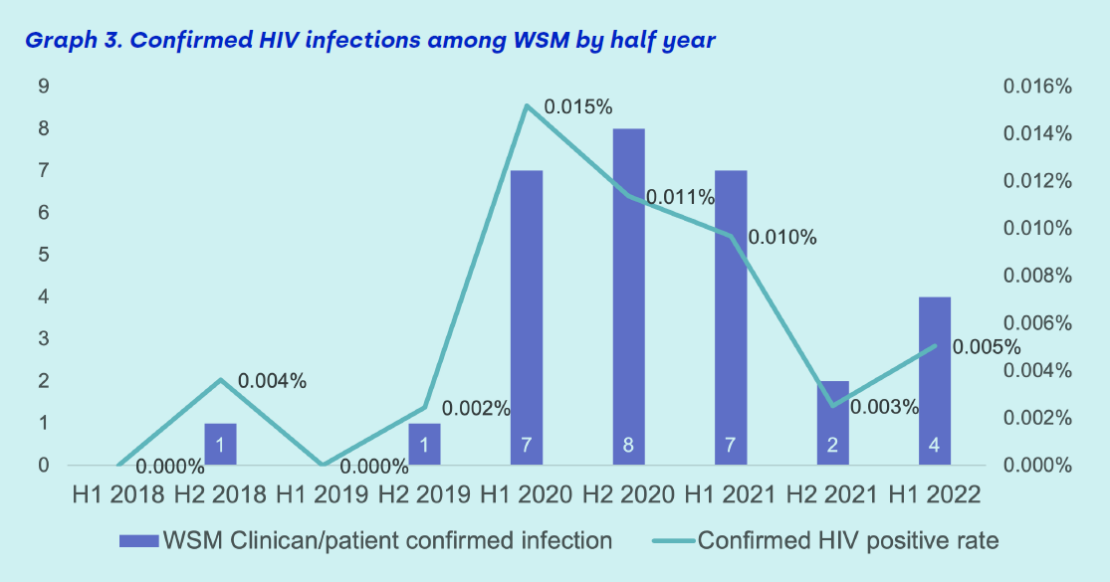by Kate Ebbutt
869,948
HIV tests analysed
269
HIV infections were confirmed
0.119%
HIV positivity amongst MSM
Clune, M (Preventx), Alston, T (Preventx), Day, S (Chelsea and Westminster Hospital NHS Foundation Trust), Kelly, A (City of London), Ebbutt, K (Preventx)
Background:
Sexual Health London (SHL) is an online sexually transmitted infection postal testing service. HIV testing is performed on self-sampled capillary blood. Individuals with reactive HIV test results are signposted to a local sexual health clinic for confirmatory testing. Confirmatory test outcomes are communicated to SHL via either the service user or clinic staff. We present e-service data on confirmed HIV infections identified and HIV positivity rates over the coronavirus pandemic.
Method:
A retrospective analysis was undertaken of the results of HIV tests performed between 8th January 2018 and 1st July 2022. The number of confirmed HIV infections and HIV positivity rates were compared over time according to gender and sexuality.
Results:
869,948 HIV tests were successfully performed during the analysis period. These samples came from: 21% gay or bisexual men who have sex with men (MSM) (n=180,279), 26% men who have sex with women (MSW)(n=230,517) and 53% women who have sex with men (WSM) (n=459,152). Women who have sex with women and individuals identifying as transgender, non-binary or other gender were not included in this analysis.
269 HIV infections were confirmed/identified over the study period. Confirmed HIV positivity was 0.119% (215/180064) amongst MSM, 0.010% (24/230,517) in MSW, and 0.007% (30/459,152) among WSM.
Conclusion:
Online services now account for 40% of STI tests in England. SHL identified 269 HIV infections during the study period. Confirmed HIV infections increased over the pandemic amongst all service users but decreased after easement of COVID19 restrictions. These observations are probably because large populations shifted to online testing online whilst face to face testing venues were disrupted by the pandemic.
A decreasing HIV positivity rate was observed among MSM, in keeping with national HIV trends and a diminishing undiagnosed proportion following the successes of pre-exposure HIV prophylaxis, increased frequency of STI testing and HIV treatment as prevention. HIV positivity has increased among heterosexuals over time. This may suggest a true increase in HIV prevalence in online heterosexual populations or that high-risk heterosexuals are becoming confident in using digital services and performing the self-sampling process. This study demonstrates the value of a regional large scale online testing service that integrates and supports the physical sexual health clinics in achieving the targets anticipated by Fast Track Cities.







About the author:
Kate Ebbutt is the Head of Marketing and Communications for Preventx